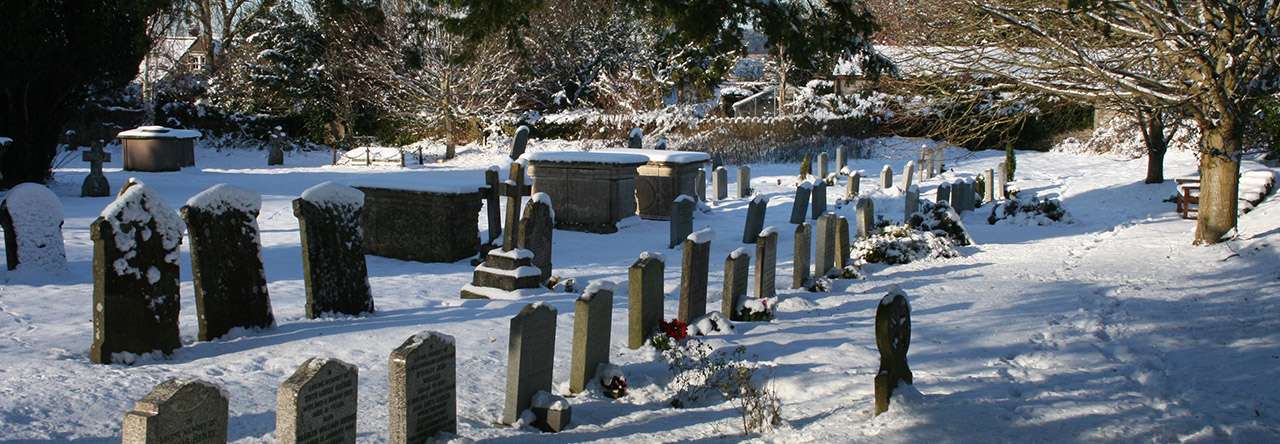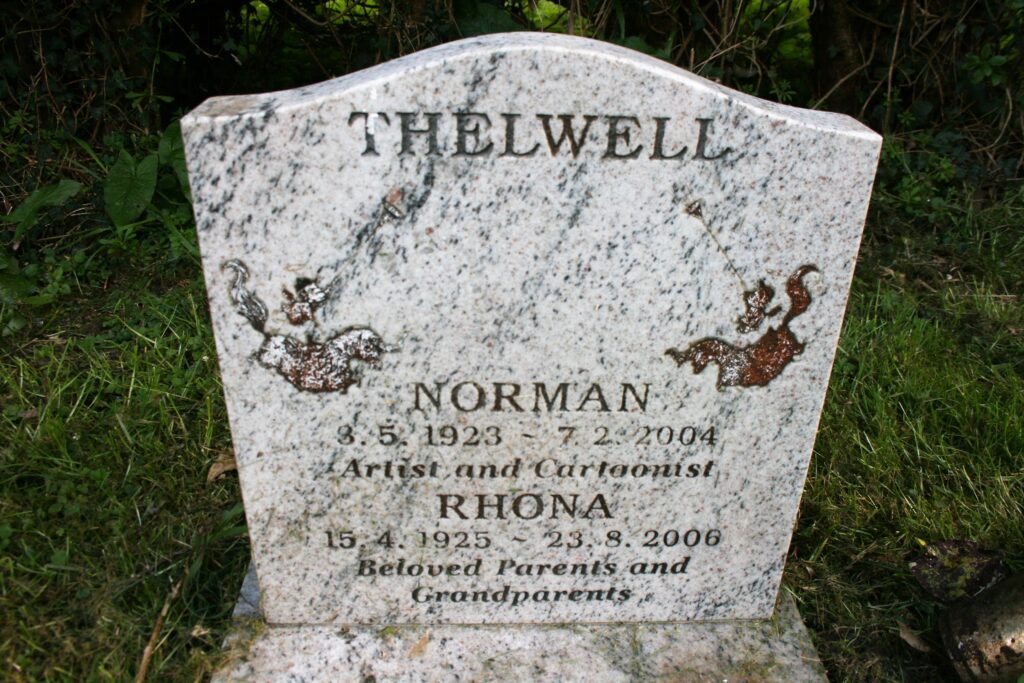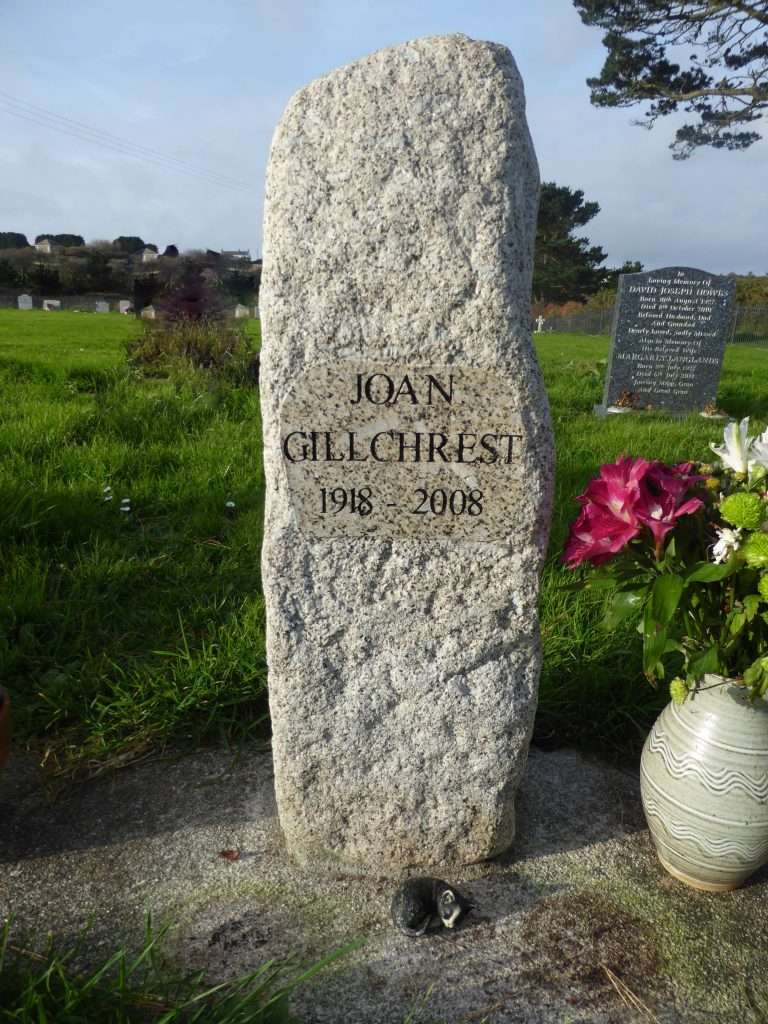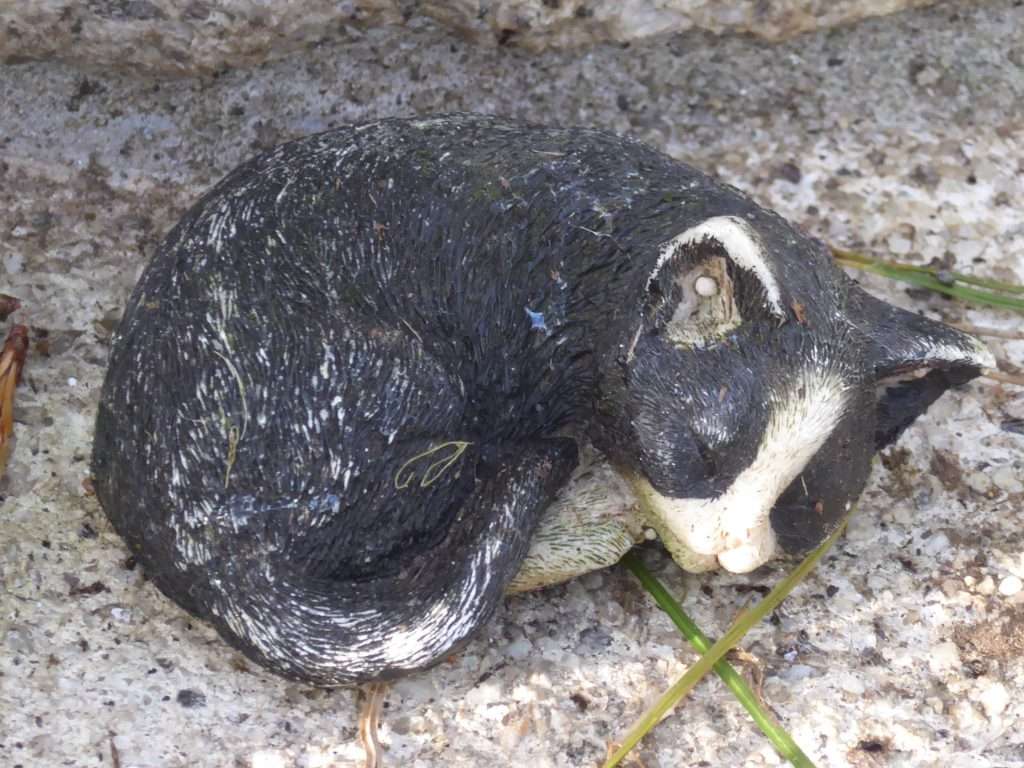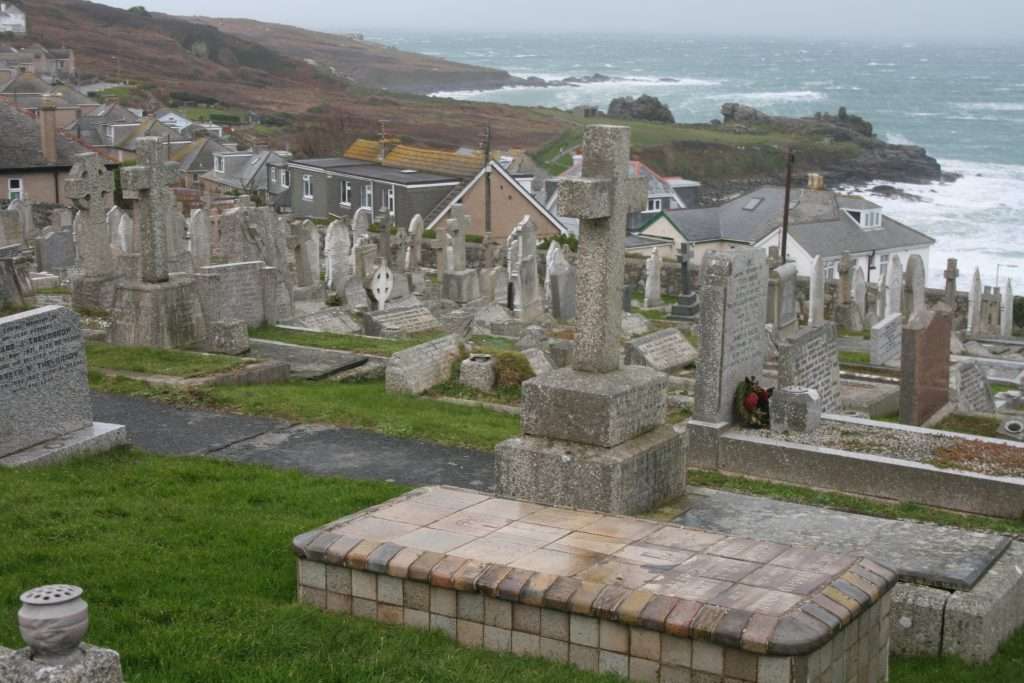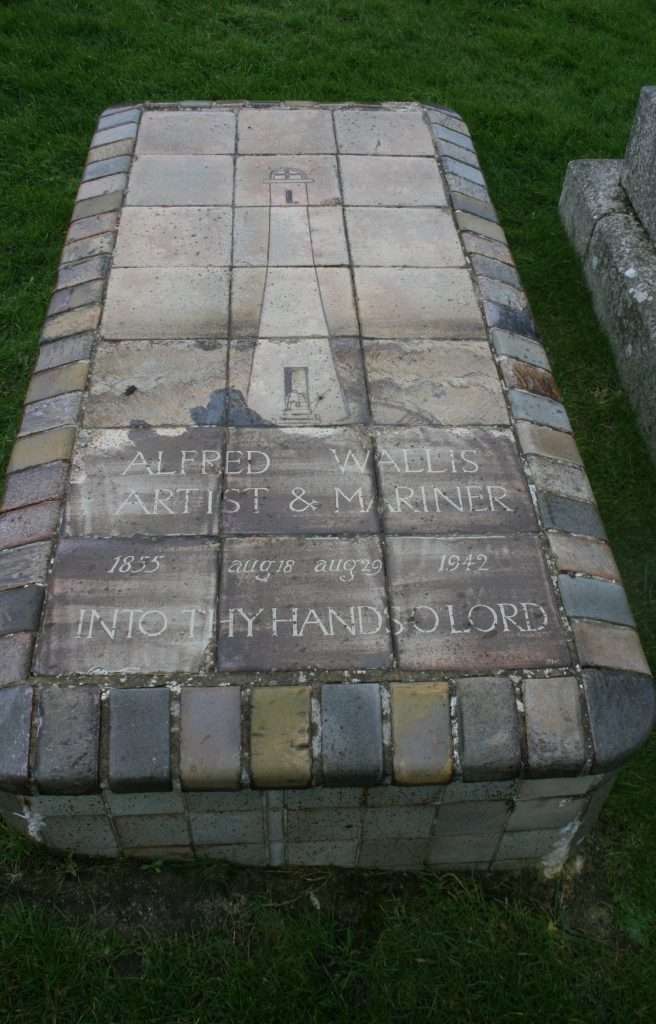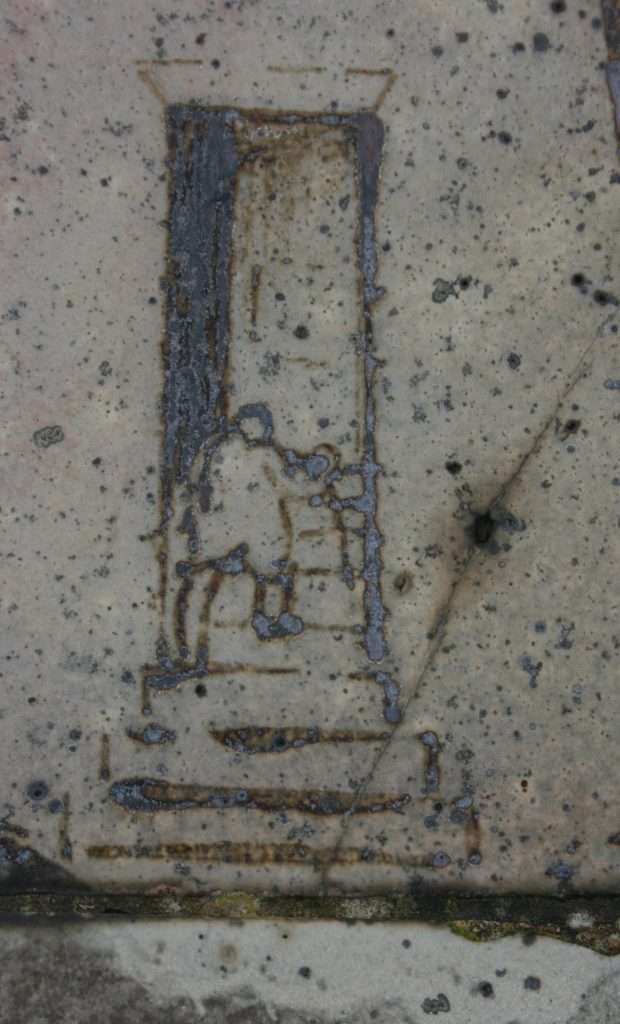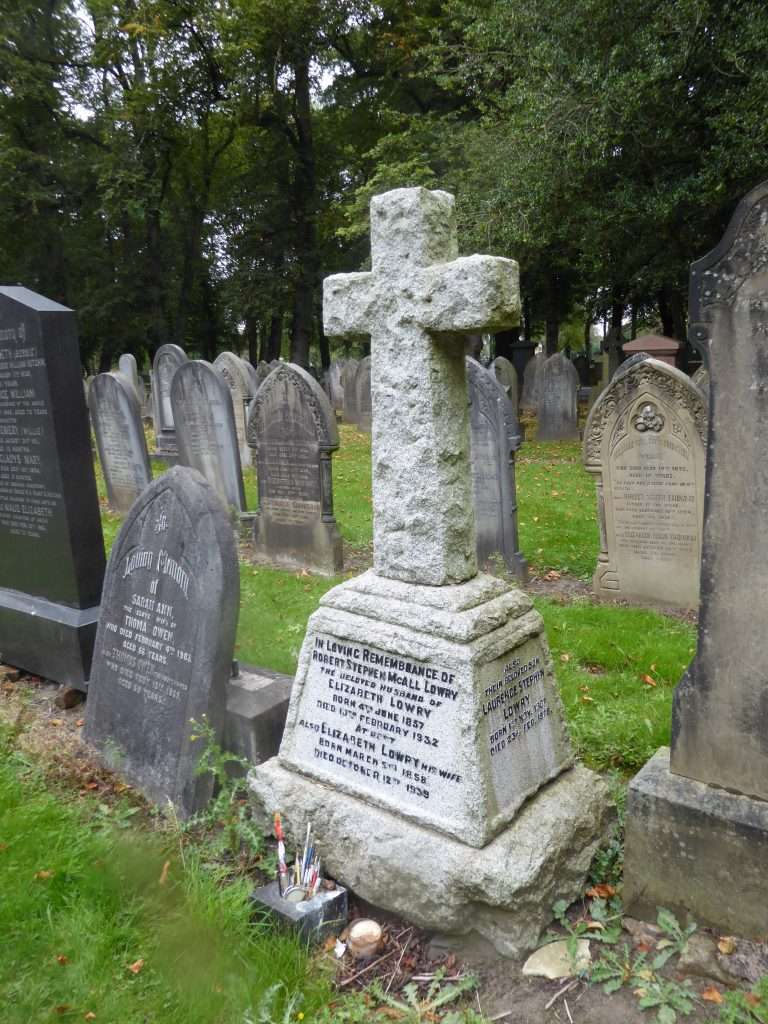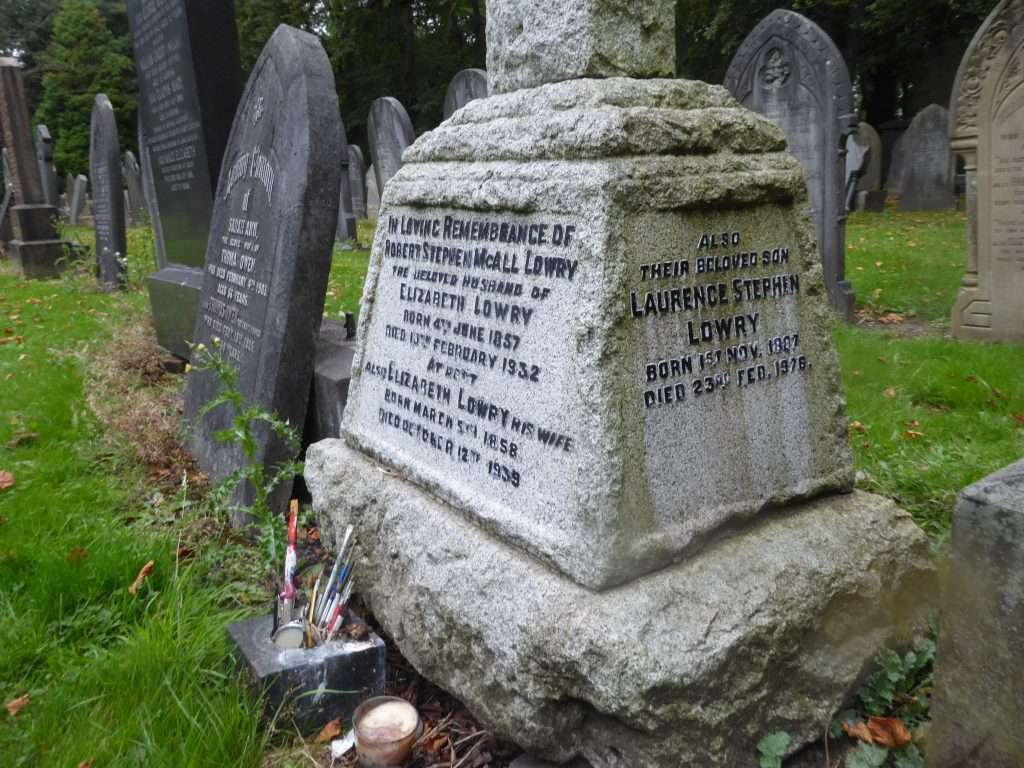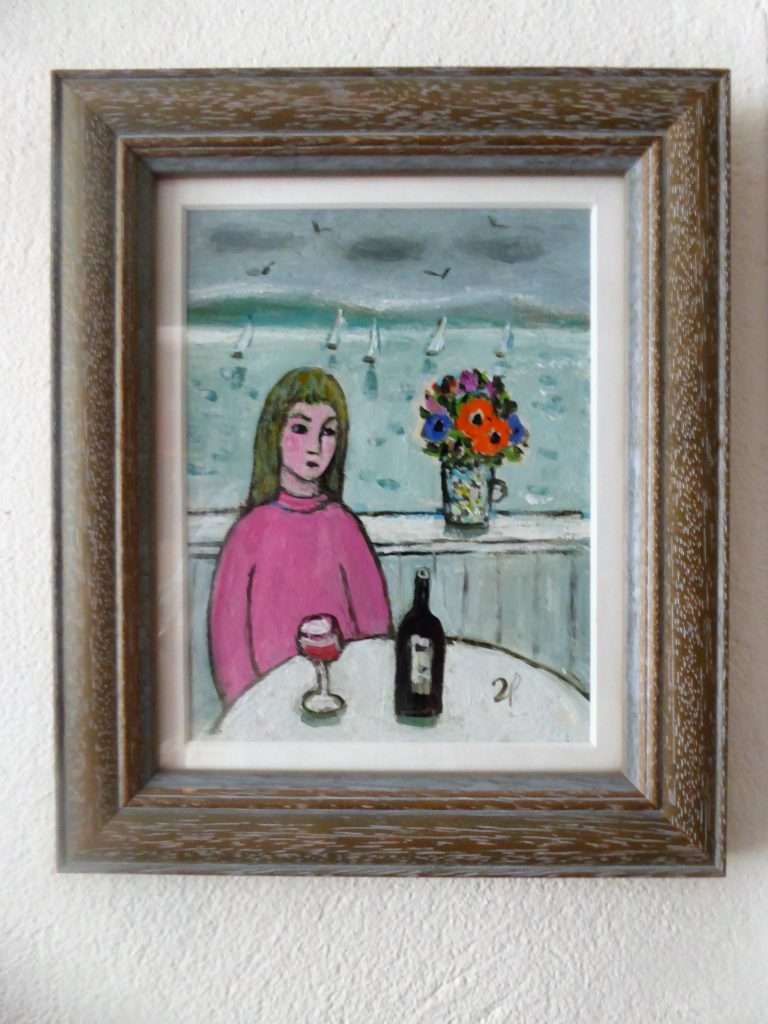The first time I saw it Patrick Caulfield’s After Lunch caught and held my attention and it continues to do so whenever I visit the Tate Gallery. The cartoonish, black outlines of the deserted restaurant, tables, chairs, the half obscured fondu set, the bored waiter staring across empty space, are suffused with an eerie blue light. Then, in contrast, from the wall at the back of the restaurant strident colours blaze out, a picture within a picture, a photomural of the Chateau de Chillon. In front of this but barely obscuring it Matisse-evoking goldfish swim around a plastic castle in an aquarium.
Clearly it is not a Swiss restaurant, more likely one of those themed restaurants which enjoyed popularity in the England of the sixties and early seventies. I have no idea what first drew me to the painting save that I wanted to know where and why, and what happened next.
After graduating from Chelsea Art School in 1960, Patrick Caulfield (1936-2005), visited Crete where he was inspired by the hard bright colours and fascinated by the Minoan frescoes. Later, looking at the postcards he had bought, he realised that the printer had added black lines around objects in the frescoes. Intrigued, he began using similar black outlines in his own work.
He developed a graphic style, depicting everyday objects – lamps, glasses, clocks – with deceptive simplicity in flat, bold colours: the banal rendered intriguing. At first he used household gloss paint on board, later oil paint, and finally acrylic on canvas.
But it is always the larger stylised interiors of empty public buildings, offices, and restaurants, which attract me most. I am fascinated by the saturated planes of colour bound by heavy back lines contrasting with the photorealistic landscapes on the walls. They hold me spellbound, transfixed by the unease with which I might regard a snake charmer. For although I find them alluring there is also a sense of foreboding about them. The anonymity and melancholy with which I feel quite comfortable in the works of Edward Hopper, here seems sinister and menacing.
When Caulfield died, William Feaver’s obituary recalled a discussion about famous artists’ epitaphs. Someone had asked Caulfield what he would put on his own gravestone. The response: “DEAD, of course.” And that is exactly what it says on his grave. Designed by Caulfield himself, the curt monosyllable is laser-cut through a block of granite like a child’s letter puzzle. Eye-catching amidst the crosses and angels, open books and obelisks, it brings me to a halt as my first sighting of his painting did. And I am not alone, for the arresting design exerts a magnetic lure over amused visitors. The distinctive grave has become one of the most popular in Highgate East.
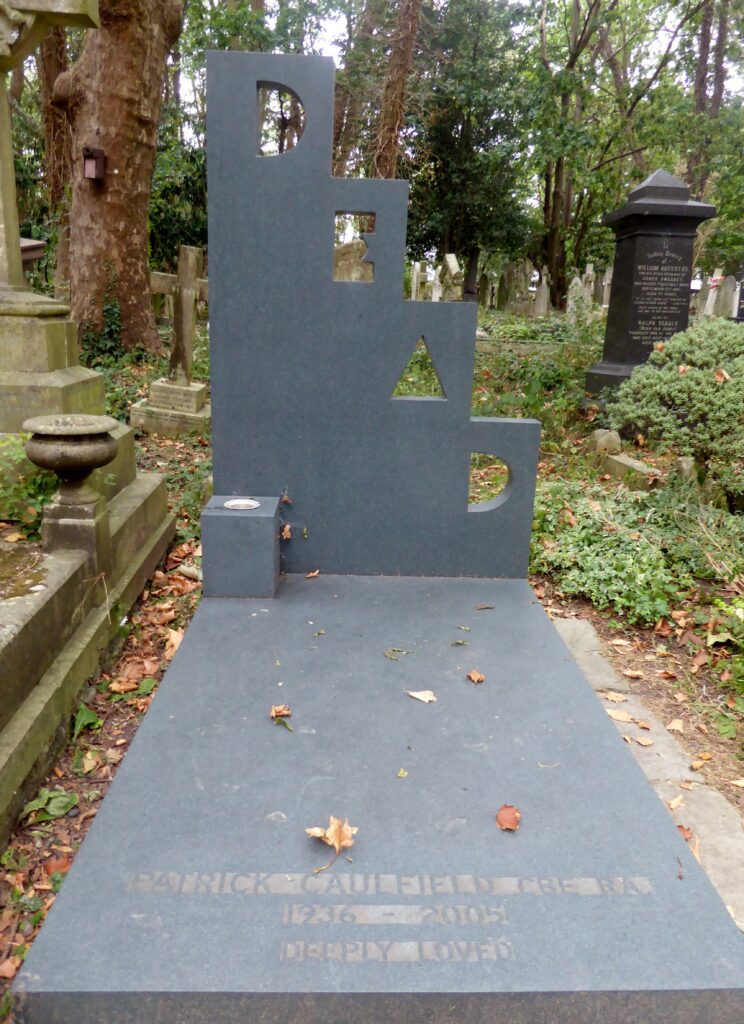
A Contrast with the Angels, Crosses, and Urns
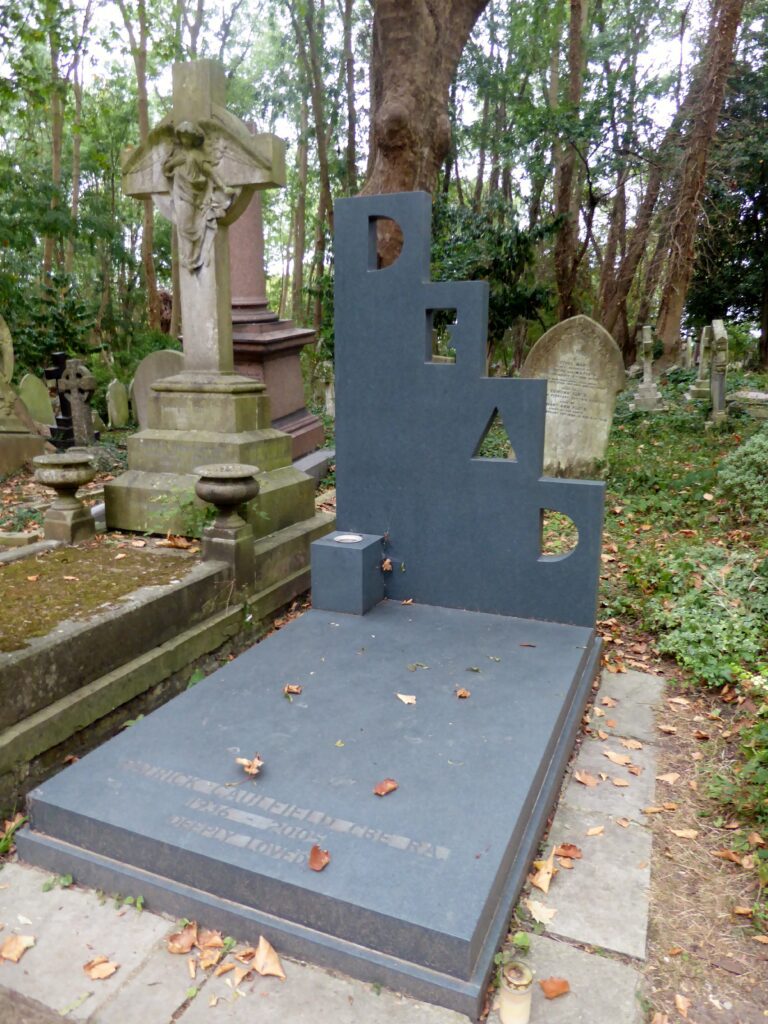
Perhaps people empathise with the blunt statement, welcome its frankness. I recall a friend who, wearied by delicate, well meant, euphemisms said crossly, “You don’t lose people. You lose your keys. People die.”
It is a view with which I sympathise and by all accounts Caulfield’s funeral was a joyful celebration of the life which preceded the death. And yet, fascinated as I am by the memorial, its stark, bleak message chills me, fostering the same disquiet which I experience when I stand in front of those rather threatening interiors.
